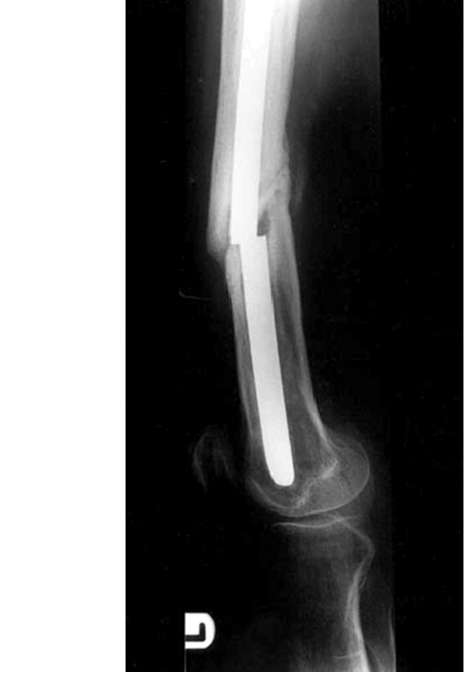FRCS (Tr & Orth) Oral Examination:IM Nail Biomechanics
IM Nail Biomechanics
Distal femoral fractures have a high incidence of intramedullary nail breakage, especially if the fracture has been produced by high-energy trauma and the patient encouraged to weight bear early. Early weight bearing with delayed fracture healing increases the time over which cyclic stress may act to cause fatigue failure and nail breakage.
Technical errors in nail insertion, such as scoring the nail during locking, may weaken the nail or create stress risers. Excessive impact during nail insertion due to under-reaming of the medullary canal may also weaken the nail.
Intramedullary nails rarely break when no locking screws are used. Statically locked nails can produce high concentrations of stress at the proximal or distal end of the nail, predisposing it to breakage. Nail design changes such as increased material thickness around screw holes, cold forming which increases material strength reduce risk of nail breakage.

Figure 9.1: Lateral radiograph of left distal femur demonstrating a broken femoral nail.

Figure 9.2: S-N curve.

